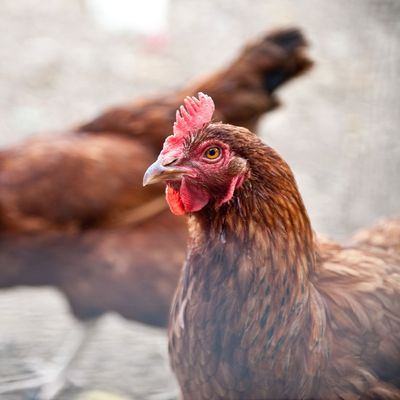
There’s something deeply satisfying about learning the very literal etymologies of seemingly nonsensical idioms. “Balls to the wall,” for instance, was originally an aviation phrase – pushing the ball-topped levers of a fuel throttle toward the front wall of the cockpit meant the plane was going full speed. “Bite the bullet” hearkens back to a grimmer time in medical science, when injured soldiers would chomp down on a piece of ammunition to deal with the pain of surgery sans anesthesia. And once upon a time, “pecking order” referred to, well, pecking, the thing that chickens do when there’s food on the ground.
That last term was coined in the early 20th century by Thorleif Schjelderup-Ebbe, a Norwegian man who harbored a borderline-obsessive preoccupation with his family’s pet chickens – and who, by meticulously observing the birds in his backyard, discovered one of the most important principles in the modern study of animal behavior. As Jack El-Hai noted in Discover today, Schjelderup-Ebbe was among the first to identify social hierarchies – yes, pecking orders – in the animal kingdom.
The fascination, El-Hai wrote, started young:
Schjelderup-Ebbe tended the chickens at the summerhouse from the age of six. They obsessed him, and even during the winter he would travel to visit them and catch up on their lives. When he was 10, he started filling a notebook with diagrams capturing the social status of the feathered population of the farmyard. He discovered hierarchies, and he began tracking their patterns of behavior….
Chickens, Schjelderup-Ebbe observed, rank themselves in predictable ways. The rankings emerge from squabbles over food, and when a chicken finds itself defeated in a dispute, it will forever submit to the winner. Each member of the flock understands who ranks above and below it, and Schjelderup-Ebbe called the highest-ranking chicken the “despot.” Dominant chickens remind their subordinates of their relative social status with a painful peck. He believed that this acceptance of hierarchy is inherited, not learned.
As he grew up, an offbeat childhood hobby developed into an academic focus: At 19, after failing to find any published research on the subject, Schjelderup-Ebbe authored a paper titled “The Voices of Chickens: A Contribution to the Psychology of Chickens.” Later, he used his childhood notes for his dissertation on chickens’ social structures, titled “Gallus domesticus in Its Daily Life.”
But it’s hard out there for a chicken obsessive, and Schjelderup-Ebbe’s ideas were largely ignored or actively disparaged during his academic life. It wasn’t until decades later that the significance of his work came into focus and the credit began to roll in – eventually, he was named as an influence by no less than the famed animal behaviorist Konrad Lorenz, probably best known for his studies of imprinting (he was the guy the baby geese followed around, an experiment that helped win him the 1973 Nobel Prize in physiology). And “other investigators built upon Schjelderup-Ebbe’s findings,” El-Hai noted, “to open new research in such areas as the intelligence of chickens, the social hierarchies of dark-eyed juncos and other birds, social rank in cattle and macaques, and the behavior of many other highly social organisms, including humans.”
“If only,” El-Hai added, “he could have learned how to navigate human hierarchies in his own life.” But the moral of the story’s right there in the jumble of chicken idioms: You don’t get to rule the roost without ruffling a few feathers along the way.




